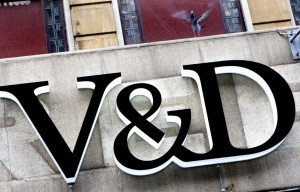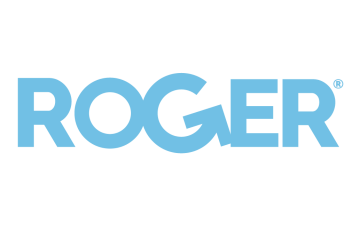 With 10,000 employees, some 100 million visitors every year and over 100 years of experience you would probably think that the department stores of V&D are a great success. But somehow things went terribly wrong with the company standing on the brink of bankruptcy. Since 2010 V&D has a new owner, Sun European Partners. This private equity firm mostly invests in underperforming companies that do have a strong position in the market. You might say that these firm’s investments would result in a better performance. Sun actually wanted to double the number of stores, but realized one so far (less than 2% increase). And as has been the case in the past 25 years, V&D realizes loss after loss, amounting to € 49 million in 2014. What happened? And what should happen in order to survive?
With 10,000 employees, some 100 million visitors every year and over 100 years of experience you would probably think that the department stores of V&D are a great success. But somehow things went terribly wrong with the company standing on the brink of bankruptcy. Since 2010 V&D has a new owner, Sun European Partners. This private equity firm mostly invests in underperforming companies that do have a strong position in the market. You might say that these firm’s investments would result in a better performance. Sun actually wanted to double the number of stores, but realized one so far (less than 2% increase). And as has been the case in the past 25 years, V&D realizes loss after loss, amounting to € 49 million in 2014. What happened? And what should happen in order to survive?
What went wrong?
There are a few reasons for the continuing losses that retail analysts agree on:
- Economic crisis (what a surprise)
- Rise of online shopping
- Cheaper competitors like Primark and Action
- Society is changing but V&D is not
- Lack of a clear identity
Just as with a moving walkway going in the opposite direction, you are going backwards when you are standing still. Adjusting to changes is therefore vital. Identity is also important. Consumers want to hear a clear story, they need a reason why they would go to a certain store. When I think of V&D I think of a department store that is neither here nor there. They are passed by De Bijenkorf on the higher end of the market and by Action and Primark on the lower end, which leaves them stuck in the middle. While they should make specific strategic choices to attract customers, they are in fact average in so many ways which results in customers turning their backs on V&D.
What you can see for yourself
When you go to the stores yourself, you will notice some interesting things. There are a couple of things that caught my attention:
- The stores are mostly not that attractive. In some stores ceilings are brownish and tiles are broken. Parts of the shopping space seem to be neglected. Shelves look plain.
- There is no really great shopping experience, you don’t go there for ‘fun’. The shop-in-shops are not that bad, but even then, it is totally different from going to stores in the main shopping streets. It’s like they’re trying to give the atmosphere a boost by adding some details, while forgetting about the entire layout of the stores.
- The products are quite average. V&D offers a lot of brands and product groups, but therefore almost inherently due to a large but limited shopping area, this means that each brand or product group only has a limited amount of distinctive items. And these are mostly the ones you will find in competing stores as well, that also have more choice.
Then why should someone shop at V&D when you can get the same product somewhere else, while even having more choice in a better atmosphere?
The only thing I am really positive about is La Place (the food section including restaurants). La Place has a specific concept that attracts customers: using fresh, natural ingredients to prepare good food in front of your eyes for a good price. Voila! La Place is even the caterer in the Google building in New York! Why has V&D been unable to copy such a concept to the stores itself? Having a clear market proposition will likely attract the customers the company needs.
Did V&D do something about it?
Not as much as needed and that caused problems. Problems that big, that it was literally a matter of days that determined whether V&D would live or die. V&D needed money, quickly! And what better way to achieve this by telling your employees their wages will be cut by an average of 5.8%. Or perhaps by sending a letter to the owners of the real estate saying that you are not going to pay the rent for the next four months and less for the period after that. Well, if doing business was that easy…
Of course the majority of the employees and real estate owners didn’t agree. To me it seems logical that you are careful with your employees. Of course, the customers bring in the money, but it’s the employees who make sure products are actually sold. By making such a one-sided decision you do however achieve something: negative media attention, unions preparing lawsuits and employees being unhappy. Those employees however do want to help out, they would accept a pay cut in order to help V&D survive. When V&D would just have talks with its employees, maybe the wages were decreased earlier already. The exact same goes for the real estate owners.
It needs to be pointed out however that the banks and the private equity owner of V&D demanded drastic measures in the form of cost cuttings. While costs should always be scrutinized, there is a difference between reducing costs by cutting ‘waste’ (due to a suboptimal process for instance) and cutting costs simply because you want to pay less. The first improves your company as a whole, the second involves the risk that the harmed parties of the cut become resistant, because there is no clear objective other than the company wanting to earn more (or lose less in this case).
Regarding cost reductions there are possibly a myriad of opinions. But there is something else you have to keep in mind. When you want to make a profit, you don’t only look at a reduction of costs, but also at an increase in revenue. This is the true bottleneck of V&D.
What can V&D do then?
Most importantly, V&D needs to make choices. When you are not speaking directly to a specific set of consumers, nobody will hear you and people won’t buy. Right now the stores offer some items of many product groups. The only thing then that attracts customers to V&D is the possibility to shop for a lot of brands within one store. But you can do that in the main shopping street too, mostly with a better atmosphere in those stores as well, and more choice. V&D can for instance choose for a few product groups with a large variety of items and be the best there is in that field. They can cooperate with brands from the main shopping streets that could start more and better-looking shop-in-shops. Cooperation with other stores creates mutual benefits. Both parties can increase their sales and share their costs. When for example there is an awesome shoe department with a lot of brands, lots of choice and the newest models, V&D has a good alternative for webshops like Zalando.
V&D can also aim for brands or products that are sold at its stores exclusively. When a demand is generated for these products, consumers need to go to V&D, because there are no brand stores that offer that product. They can also think about an expansion and improvement of their own brand. These private labels offer the highest margins and again, when there is demand, people don’t have a choice other than going to V&D.
Another important aspect is experience. People want to have a great shopping experience! When brick-and-mortar stores offer no particularly fun experience, people will shop online. So being ‘normal’ is no option anymore, except when you are really cheap like Action. V&D therefore needs to renew its stores to make everything more appealing. Floors, walls, ceilings, lighting and store furniture should be redesigned. Store personnel should treat their customers as VIPs again. Multimedia should become an important aspect. New, inspiring and innovative products should be sold.
V&D has a great potential with its A-class locations, its history, its large store space and its name. Missing is a clear and appealing strategic marketing choice. Who are its customers, what is its target segment, what are its product groups, what is its design style? With La Place the company has shown that it’s able to make great strategic decisions. Now it’s up to V&D itself. Will they survive? The next couple of months will be crucial. These are exciting times, but now it’s time for exciting stores.

0 Comments